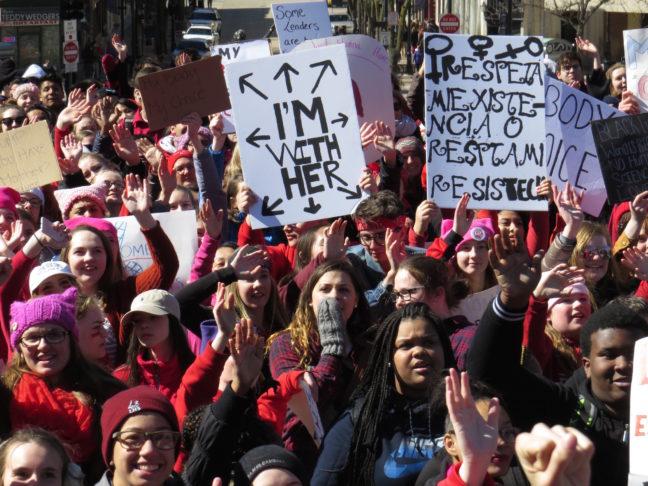It’s a record-breaking year for women in politics. Most notably, Kamala Harris became the first female Vice President of the United States. President Biden’s cabinet is diverse in both gender and race as well. While women in federal power inspire young women to aim high, the Wisconsin State legislature is making history as well.
This year marks the most female legislators in Wisconsin state government history. According to Wisconsin Public Radio, “as the new legislative session begins in Madison, there are 41 women serving in the state Legislature, up from 34 during the last session. That means women will make up roughly 31% of Wisconsin state lawmakers over the next two years.”
I believe these triumphs in female leadership have implications in two areas — the first being policy that directly affects women, and the second being the future of female politicians.
UW students react to 2020 election results with joy, hope amid pandemic anxiety
First, studies suggest that higher female representation in government leads to improvement in female-oriented issues. But, I feel these studies are overly optimistic. Globally, when the amount of female politicians in office increases, there is an unspoken limit on how influential these leaders may be. In many countries in the Middle East, for example, gender quotas have introduced female legislators to parliament. Yet, these women are still taken less seriously than men or are only granted access to stereotypically “female” committees, such as family and education.
What’s more, while 31% female representation is definitely a step in the right direction for Wisconsin, it is still a disappointingly low figure. When legislation that directly affects women is put to a vote, there is no way in which women can create a majority. Since the current Assembly is also Republican, low female representation directly impacts decisions pertaining to women’s health, such as allocating tax funds to Planned Parenthood. For example, Scott Walker’s administration passed 14 policies restricting Wisconsinites’ access to women’s health care. Female representation is not just symbolic — there are real-world consequences to unequal representation.
Confirmation of Amy Coney Barrett win for Trump campaign, may be turning point in election
Second, increasing the number of women in state government can directly inspire another generation of female politicians. It is important that young women see themselves in the world they wish to be part of. Unless trailblazing women continue to enter public service, young girls will not aspire to replicate their journeys.
Additionally, according to a Brookings study, of women that have voted in recent elections, a majority lean Democratic. Since we know the Wisconsin legislature is Republican, if women continue to enter that space, they may very well shift the Assembly to lean Democrat in future years.
Commemorating life of Ruth Bader Ginsburg: Her work is in jeopardy under Trump administration
As a political science student at UW, I have often wondered how far I can progress professionally before the patriarchal curtain descends. The wins of state and federal female politicians are wonderfully reassuring. Vice President Harris and state representatives alike motivate my peers and myself to aim high and challenge the status quo. Given these women all took different paths to reach their success, I believe we will see an increase in female lawyers, doctors and other jobs that require conviction.
In conclusion, the future of women in American politics is bright, but we have a long way to go. We can celebrate current wins while also looking at persistent challenges. A gender-equal government is possible over time. With the combined efforts of current female powerhouses, the next generation of female students and male political allies, the future is undoubtedly female.
Emma Axelrod ([email protected]) is a junior studying political science and journalism.














